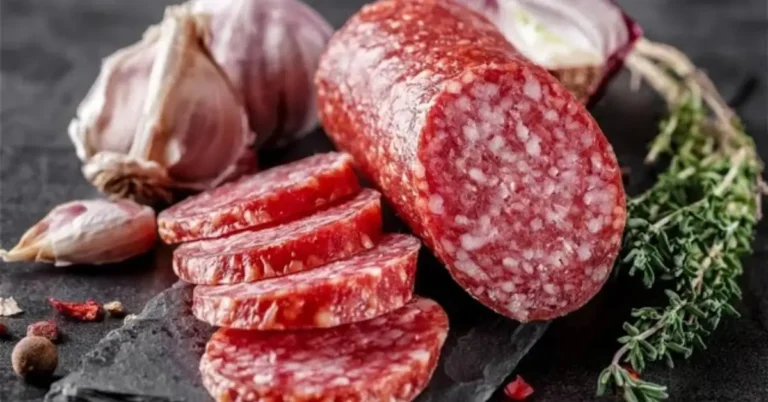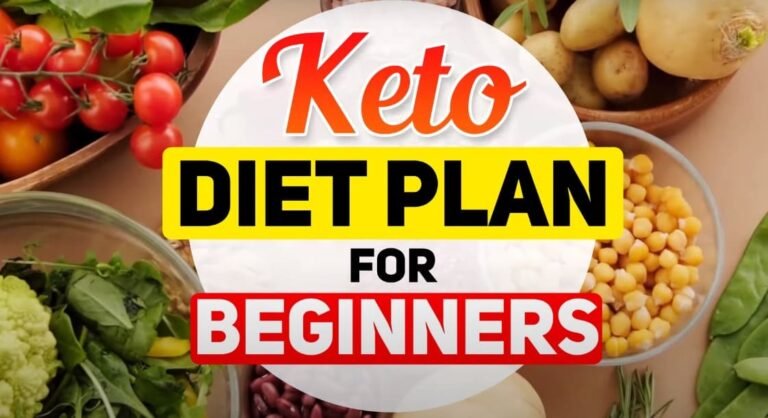Keto Diet Plan Chart for Weight Loss: Your Essential Guide to Effective Meal Planning
The Keto Diet Plan has gained significant attention for its potential to aid in weight loss. With a focus on low carbohydrates and high fats, this approach can help you burn fat more efficiently while maintaining your energy levels. Many people have found success using this plan, making it a popular choice for those looking to shed pounds.

To get started, you will need to understand how to create a personalized Keto diet chart that suits your lifestyle and preferences. This article will guide you through essential steps to develop your meal plan, providing practical examples and tips to enhance your journey. Monitoring your progress and making adjustments ensures you stay on track toward your weight loss goals.
Key Takeaways
- A well-structured Keto diet plan can help you achieve weight loss effectively.
- Sample meal plans provide inspiration and guidance to maintain your diet.
- Adjusting your approach based on progress is key to long-term success.
Understanding the Keto Diet
The Keto diet is a low-carb, high-fat meal plan that can help you lose weight effectively. It focuses on shifting your body into a state called ketosis, where it burns fat for fuel instead of carbohydrates. Here are key aspects of the diet, including its definition, benefits, and potential risks.
Definition and Principles
The Keto diet is defined by its low carbohydrate intake, typically between 20 to 50 grams per day. This restriction prompts your body to enter ketosis, a metabolic state where fat becomes the primary energy source. You mainly consume fats (about 75% of your daily calories) and moderate amounts of protein. Foods like meat, fish, dairy, eggs, nuts, and low-carb vegetables are staples.
The diet discourages high-carb foods such as bread, pasta, and sugary snacks. By following this plan, your body adapts to burning fat, leading to effective weight loss and increased energy levels.
Benefits for Weight Loss
One major benefit of the Keto diet is its ability to promote weight loss without the constant feeling of hunger. When your body burns fat for energy, it can create a steady energy supply. Many people report feeling fuller longer and snack less frequently.
Research suggests that the Keto diet can be especially effective for shedding excess body fat. This diet can also aid in reducing insulin levels, which may lead to better fat loss. It is also shown to improve metabolic diseases, including type 2 diabetes.
Potential Risks and Considerations
While the Keto diet has many benefits, it also comes with risks. Some people experience side effects known as the “Keto flu,” which can include headaches, fatigue, and nausea when first starting the diet. It’s essential to stay hydrated and consider electrolyte supplements during this time.
Long-term adherence to the Keto diet may also lead to nutritional deficiencies if not well-planned. Some people may experience issues with cholesterol levels and liver health. Regular check-ups with a healthcare provider are recommended to monitor your health while on this diet.
Starting Your Keto Journey
Beginning a keto diet requires careful planning and self-assessment. You need to understand if you are truly ready to make this change. Setting realistic and achievable goals is also crucial. This process will help guide your transition into a ketogenic lifestyle.
Assessing Your Readiness
Before starting, take some time to evaluate your current health and lifestyle. Consider the following questions:
- Medical Conditions: Do you have any health issues that could be affected by a change in diet?
- Current Diet: Are you accustomed to a high-carb diet? Transitioning may be challenging initially.
- Support System: Do you have friends or family who can support you during this journey?
Understanding your readiness can help reduce feelings of overwhelm. Consulting a healthcare provider before starting is advisable. This medical background can highlight potential challenges and set appropriate guidelines for your new diet.
Setting Realistic Goals
Once you assess your readiness, it’s time to set your goals. Consider realistic objectives that focus on both short and long-term outcomes. Here are examples of possible goals:
- Weight Loss: Aim for a specific amount, like 1-2 pounds per week.
- Meal Prep: Plan to prepare meals on weekends to stay on track.
- Educational Goals: Commit to learning about keto by reading at least two books or articles each month.
Having a well-defined plan makes it easier to stick to your diet. Write down these goals and track your progress. This method keeps you motivated and accountable as you transition into keto.
Creating Your Keto Diet Plan
Building a successful keto diet plan involves understanding macronutrient ratios, calculating your daily caloric needs, and knowing which foods to include or avoid. This approach helps ensure you reach your weight loss goals effectively.
Macronutrient Ratios
A key aspect of the keto diet is achieving the right macronutrient ratios. Typically, your daily intake should consist of about 70-75% fat, 20-25% protein, and 5-10% carbohydrates.
This ratio helps your body enter and maintain ketosis, the state where it burns fat for fuel instead of carbohydrates.
To put this into perspective:
- Fat: Focus on healthy fats like avocados, olive oil, and nuts.
- Protein: Choose moderate amounts of protein from sources like eggs and poultry.
- Carbs: Restrict carbs to around 20-50 grams of net carbs daily, sourced from low-carb vegetables.
Calculating Daily Caloric Needs
To create your diet plan, begin by calculating your daily caloric needs. Use an online calculator to determine your Basal Metabolic Rate (BMR) based on your age, weight, height, and activity level.
Once you have your BMR, adjust it by multiplying by an activity factor (sedentary, lightly active, moderately active, or very active).
To promote weight loss, aim to reduce your intake by about 500-750 calories per day. Remember that drastic reductions can hinder your progress, so gradual changes are ideal for sustainability.
Foods to Include and Avoid
Your food choices play a crucial role in your keto diet plan.
Foods to Include:
- Healthy Fats: Olive oil, butter, and coconut oil.
- Proteins: Eggs, fish, and grass-fed meat.
- Low-Carb Vegetables: Spinach, kale, and cauliflower.
Foods to Avoid:
- Sugary Foods: Candy, soda, and baked goods.
- Grains: Bread, pasta, and rice.
- High-Carb Vegetables: Potatoes, corn, and peas.
By selecting the right foods, you can effectively support your body in ketosis and work toward your weight loss goals.
Sample Keto Meal Plans
When starting a keto diet, having a structured meal plan is essential for success. Here are detailed options you can use as a guide, including a starter plan, vegetarian choices, and adaptations for active lifestyles.
7-Day Starter Plan
A 7-day keto meal plan offers a foundation to kickstart your journey. Here’s a simple breakdown for each day:
Day 1:
- Breakfast: Scrambled eggs with spinach and cheese
- Lunch: Grilled chicken salad with olive oil dressing
- Dinner: Salmon with asparagus and butter
Day 2:
- Breakfast: Greek yogurt with nuts
- Lunch: Lettuce wraps with turkey and avocado
- Dinner: Zucchini noodles with marinara sauce
Day 3:
- Breakfast: Omelet with peppers and onions
- Lunch: Tuna salad with mayonnaise
- Dinner: Beef stir-fry with broccoli
Repeat similar ideas for the remaining days. Make sure to keep your carb intake below 20 grams per day. You can use resources like the 14-Day Keto Meal Plan for more help.
Vegetarian Options
If you prefer a vegetarian approach, there are many low-carb foods to enjoy. Focus on high-fat options such as cheese, nuts, and seeds.
Breakfast Ideas:
- Chia seed pudding with almond milk
- Avocado toast on low-carb bread
Lunch Options:
- Spinach salad with feta cheese, olives, and avocado
- Cauliflower rice with mixed vegetables
Dinner Choices:
- Eggplant lasagna with ricotta cheese
- Stir-fried tofu with green beans
Balancing protein with healthy fats is crucial in a vegetarian keto diet. You can explore more vegetarian meal ideas at Perfect Keto.
Adapting Plans for Intense Workouts
If you engage in intense workouts, it’s important to adjust your meal plan to meet your energy needs. This often means slightly increasing your carb intake around your workout times.
Pre-Workout Meal:
- A small portion of berries or a slice of low-carb bread with almond butter can fuel your workout.
Post-Workout Meal:
- Include a protein shake made with almond milk and avocado for recovery.
Daily Structure:
- Stick to keto-friendly foods but increase your healthy fats, like nut butters or coconut oil, to help with recovery.
Always remember to listen to your body and adjust your intake based on your energy levels. For further details, check out the Keto Diet Meal Plan.
Monitoring Progress and Adjusting Your Plan
Tracking your progress on the keto diet is crucial for achieving your weight loss goals. Regularly assessing your meals and macronutrient intake helps you understand what works best for your body. Knowing when to make changes can keep your journey effective and sustainable.
Tracking Your Meals and Macros
To succeed on the keto diet, keep a detailed log of your meals and macronutrients. Aim for about 20-50 grams of net carbs, moderate protein, and high fat intake. Using tools like mobile apps can simplify this process.
Consider creating a daily food diary that includes:
- Food items consumed
- Portion sizes
- Total carb, protein, and fat counts
Review this diary weekly to identify patterns. If you notice stalls in your weight loss, it might be time to reassess your intake. This habit not only guides your choices but also empowers you to adjust your plan effectively.
When to Adjust Your Diet
It’s essential to know when to tweak your keto plan. If after a few weeks you aren’t seeing results, consider adjusting your macronutrient ratios.
- Increase healthy fats if you’re hungry often.
- Cut down carbs further if weight loss stalls for more than two weeks.
- Monitor your energy levels; fatigue may indicate you need more calories.
Listen to your body. If you experience consistent fatigue or irritability, reevaluate your protein intake and overall caloric consumption. Making small adjustments can lead to significant improvements in your progress.
FAQs About Keto Diet Plan Chart for Weight Loss
How Effective is the Keto Diet for Weight Loss?
The Keto diet is highly effective for weight loss, as it shifts your body to burn fat for energy, leading to quicker fat loss.
What Should I Eat on a Keto Diet Plan?
On a Keto diet, focus on high-fat foods like avocados, nuts, and olive oil, moderate protein, and low-carb vegetables.
How Many Carbs Should I Consume on Keto?
Typically, you should consume no more than 20-50 grams of carbs per day to stay in ketosis.
Can I Follow a Keto Diet Long-Term?
Yes, you can follow a Keto diet long-term with proper planning and monitoring to ensure nutritional balance and health.
What is a Keto Diet Plan Chart?
A Keto Diet Plan Chart outlines the daily intake of fats, proteins, and carbohydrates to help you maintain ketosis and achieve weight loss.








